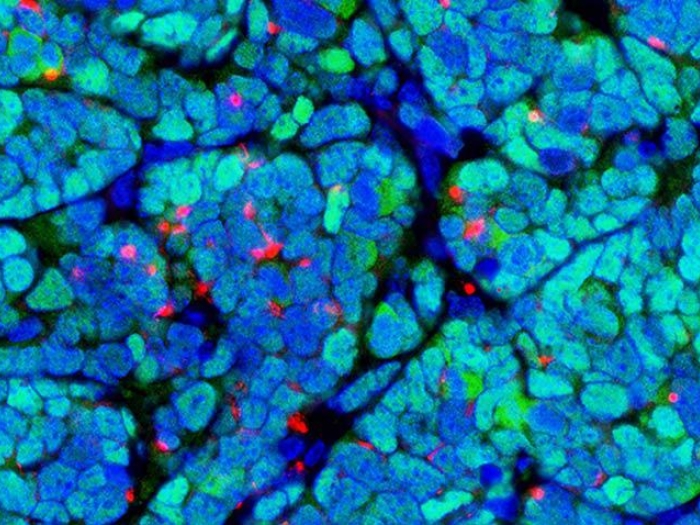Study examines interaction between three naturally occurring gases
11:00 AM
Author |

Hydrogen sulfide (H2S), like many other gases, can be helpful in small doses yet deadly in large amounts. The rotten egg smelling gas is a toxic byproduct of paper milling and sewage treatment industries, as well as a component of volcanic emissions. Yet H2S is also produced by the human body and by microbes in our gut and is a key player in blood vessel formation.
A new collaborative study from the lab of Ruma Banerjee, Ph.D., a professor in the University of Michigan Medical School Department of Biological Chemistry, examined the interaction between three naturally occurring gases — nitric oxide (NO), oxygen, and H2S — during generation of new blood vessels, called angiogenesis.
Blood flow and tumors
In the context of growth and wound healing, angiogenesis is desirable. In the context of cancerous tumors, however, it is problematic. Uncovering the mechanisms behind the body’s use of H2S could offer a potential target for stopping blood flow to tumors.
“What we stumbled upon was a mechanism that could connect how the known increase in NO under conditions of low oxygen, or hypoxia leads to an increase in H2S, an important signaling molecule,” said Banerjee.
“As NO goes up, a type of metabolic code switching occurs in the transsulfuration pathway that typically makes the amino acid cysteine. The pathway code switches through a complicated regulatory process to make H2S instead.” This process is essential for making blood vessels.
Protein deficiency
A protein called sulfide quinone oxidoreductase, or SQOR, helps keep H2S in balance by oxidizing it and generating energy. To illustrate the importance of SQOR for angiogenesis, the team partnered with Yatrik Shah, Ph.D. in the Department of Molecular & Integrative Physiology and the Rogel Cancer Center, to generate mouse models of SQOR deficiency.
Through several experiments led by postdoctoral fellow Roshan Kumar, Ph.D. and involving U-M’s Physiology Phenotyping Core, the team showed that a deficiency of SQOR in conditions of low oxygen led to a reduction in blood vessel generation due to a reduction in mitochondrial energy, both for injury repair following ischemia and in melanoma tumor growth.
“If you make more H2S under hypoxia but you can’t oxidize it via SQOR, it’s a problem, because it restricts blood vessel formation by endothelial cells,” said Banerjee. “It’s the ability to oxidize H2S and dump those electrons into the electron transport chain that we’ve discovered is important for new blood vessel biogenesis.”
New targets needed
Traditional therapies to block tumor angiogenesis have so far been unsuccessful.
“If you inhibit one pathway, cells seem to be able to reroute, so resistance has been a problem. Finding new targets that can be exploited via a multidrug therapy is an important goal,” said Banerjee. The new fundamental findings identify SQOR as a potential novel target for therapeutics.
Additional authors: Include Victor Vitvitsky, Apichaya Sethaudom, Rashi Singhal, Sumeet Solanki, Sydney Alibeckoff, Harrison L. Hiraki, Hannah N. Bell, Anthony Andren, and Brendon M. Baker
Citation: “Sulfide oxidation promotes hypoxic angiogenesis and neovascularization,” Nature Chemical Biology, DOI: 10.1038/s41589-024-01583-8
Sign up for Health Lab newsletters today. Get medical tips from top experts and learn about new scientific discoveries every week by subscribing to Health Lab’s two newsletters, Health & Wellness and Research & Innovation.
Sign up for the Health Lab Podcast: Add us on Spotify, Apple Podcasts or wherever you get you listen to your favorite shows.

Explore a variety of health care news & stories by visiting the Health Lab home page for more articles.

Department of Communication at Michigan Medicine

Want top health & research news weekly? Sign up for Health Lab’s newsletters today!





